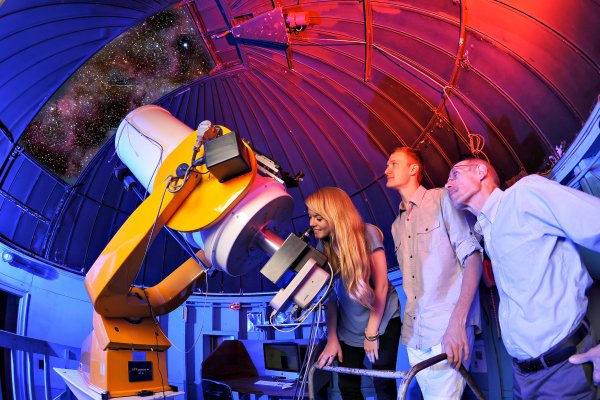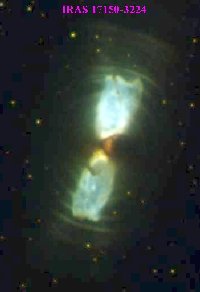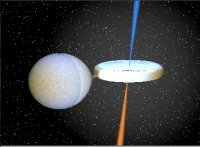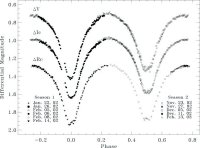Observational Astronomy
Taking a close look at the distant world.
The department’s faculty and students are involved with four primary research projects using telescopes in Indiana, Arizona, Hawaii, Chile, and in space, including the SARA Telescopes.
Investigator: Todd Hillwig, Ph.D.
Planetary Nebula Central Stars are remnants of sun-like stars that have shed their outer
envelopes. These envelopes are blown away from the star and appear to observers on Earth as planetary nebulae. Many planetary nebulae have complex shapes, and astronomers aren’t sure what creates the varied and fascinating structures we observe. One possibility is that there is a companion to the central star, and the orbit of these two stars creates the physical conditions that shape the outflowing gas. Professor Hillwig’s research has focused on determining how many, and specifically which, planetary nebulae have binary central stars. This research has been conducted primarily using the SARA telescope at Kitt Peak National Observatory in Arizona.
Investigator: Bruce Hrivnak, Ph.D.
Valpo’s observatory is currently being used for a long-term study of evolved stars, with support from the National Science Foundation and NASA. These stars have evolved beyond the red giant stage and have ejected their outer gaseous layer. Professor Hrivnak has been working to:
- identify evolved stars
- determine the properties of the stars – spectral type, chemical composition, and variability
- determine the properties of the surrounding nebula – composition, kinematics, and structure
This research has made use of large ground-based telescopes in Hawaii, Arizona, and Chile, as well as space-based telescopes such as the Hubble Space Telescope, Spitzer Space Telescope, and Infrared Space Observatory.
Investigator: Todd Hillwig, Ph.D.
Professor Hillwig works with collaborators around the country to understand the complicated nature of SS 433 (also known as V1343 Aql), an interacting binary system. Astronomers currently believe that the system consists of a black hole and an A-type supergiant star approximately 27 times the diameter of the sun. The star and black hole orbit one another in just over thirteen days. Because of this close proximity, the black hole in the system pulls material from the supergiant star. This material circles the black hole forming a large disk of gas. Some of the material gets ejected perpendicular to the disk as narrow “jets,” travelling at 0.26c — 26 percent of the speed of light!
Investigator: Bruce Hrivnak, Ph.D.
Professor Hrivnak is also studying eclipsing binary star systems to determine the fundamental properties of the individual stars, such as mass, size, and temperature. This involves observation of their light curves using the Valpo Observatory observation of their velocity curves at other observatories. This study has resulted in several publications with Valpo undergraduate students as co-authors.




